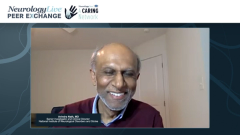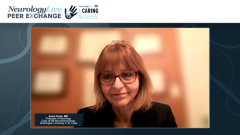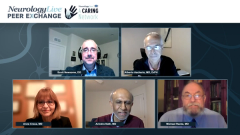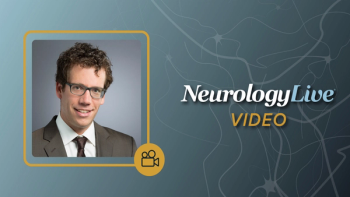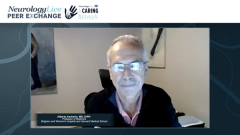
Exploring Contributing Risk Factors to MS
Alberto Ascherio, MD, DrPH, highlights key risk factors leading to increased prevalence of multiple sclerosis.
Episodes in this series

Scott Newsome, DO: Alberto, I want to circle back to you because I’m curious about your thoughts. Mike touched on this. Your paper said that it’s necessary to have exposure to EBV [Epstein-Barr virus] to develop MS [multiple sclerosis]. In your view, what are some other additional factors that would play into leading someone to MS? Meaning unhealthy lifestyle choices or if someone is a smoker or overweight. Does that add into the mix to even increase that 30-plus-fold that EBV seems to add?
Alberto Ascherio, MD, DrPH: It’s rare for a virus to be sufficient to cause a disease. I agree with Michael, but EBV and MS in this sense are similar to human papillomavirus and cervical cancer, the hepatitis D virus and liver cancer, or many viruses and encephalitis. It’s quite common for a virus to cause a disease in a small minority or in a proportion of people. The sufficiency is almost never given. I also try to stay away from saying it’s necessary, because unless we define a disease as being caused by a specific agent—for example, if you define measles, it’s the infection with the measles virus. If you define measles clinically, even if it’s a very characteristic disease, you’ll find children with a fever and all the symptoms, and it isn’t caused by the measles virus. I tend to stay away from that because there will be an individual with all the features of MS, and there will be 1 of 800 who’s in our study but isn’t EBV positive and who has a disease that isn’t caused by MS.
Getting more precisely to your question, in the past 20 years, we’ve been looking at risk factors for MS in individuals who are EBV positive because that’s the large majority of the population. We and others have identified vitamin D sufficiency, cigarette smoking, childhood obesity, and genetic predisposition as the main factors that influence the risk of MS. Each factor has a magnitude of effect around 2-fold, maybe 3-fold, for the HLA-DR15 allele. They contribute to the risk, but EBV is by far the strongest.
Scott Newsome, DO: That’s what caught my attention with your study. When we think about MS and preventing MS, once someone has MS, we have good immune therapies to prevent relapses, new spots on MRI, etc. But if we can develop treatments, that may prevent MS in an individual who may be at high risk of developing MS. With someone who’s EBV positive and was exposed to EBV, we should be encouraging them to make healthy lifestyle choices: to stop smoking if they’re a smoker and to exercise if they’re not exercising. But that may get us only so far, as you nicely mentioned about the increased risk or folds between EBV and other factors.
Transcript Edited for Clarity
Newsletter
Keep your finger on the pulse of neurology—subscribe to NeurologyLive for expert interviews, new data, and breakthrough treatment updates.

